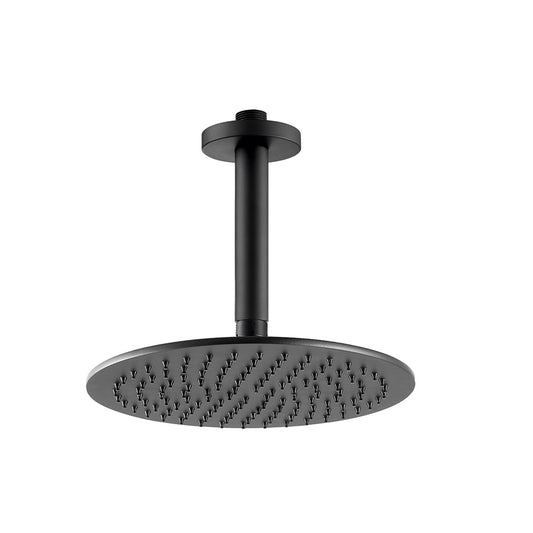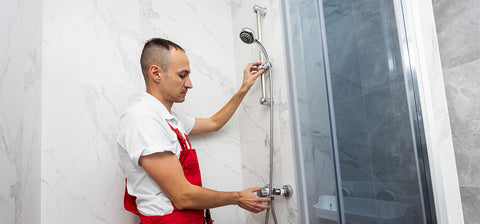How to Install a Shower: A Detailed Step-by-Step Guide
Table of Contents:
-
Introduction
-
Understanding Your Shower Options
-
How to fit a shower : Step BY Step Guide
-
Troubleshooting and Tips
-
Conclusion
Introduction:
In this comprehensive guide, we will walk you through the process of How to install a shower in your bathroom.
Understanding the nuances of each shower type – electric shower, mixer shower, and thermostatic mixer shower – is crucial for a successful installation.
By the end of this article, you'll have the knowledge and confidence to install the shower that suits your needs.
Understanding Your Shower Options:
Before we dive into installation, it's essential to understand the three primary types of showers:
- Electric Showers: These showers have an element that heats the water as it flows through, offering instant hot water. Learn how to install an electric shower.
- Mixer Showers: Mixer showers blend hot and cold water to achieve your desired temperature. Discover the installation process for mixer showers.
- Thermostatic Mixer Showers: These showers maintain a constant temperature, making them safe and convenient. Find out how to install a thermostatic mixer shower.
How to fit a shower : Step BY Step Guide
1.How to Install an Electric Shower:
Step 1: Choose the installation spot in your bathroom.
Step 2: Install hot and cold water supply pipes to the shower area.
Step 3: Have an electrician install the necessary electric cable from the electrical distribution board to the shower location.
Step 4: Securely mount the electric shower unit following the manufacturer's instructions.
Step 5: Use sanitary silicone sealant to create a waterproof seal around the shower unit.
Step 6: Connect the waste outlet of the electric shower to the waste trap following the manufacturer's guidance.
Step 7: Have the electrician make the final electrical connection and test the shower for proper functionality.
2.How to fit a Mixer Shower:
Step 1: Choose the installation spot in your bathroom for the mixer shower.
Step 2: Run hot and cold water supply pipes to the shower area.
Step 3: Securely attach the mixer valve to the wall and connect the supply pipes as instructed by the manufacturer. Install the shower rail at your desired height.
Step 4: Connect the hose and showerhead to the mixer valve.
Step 5: Use sanitary silicone sealant where needed, such as around the shower rail or openings in the wall.
Step 6: Turn on the water, check for any leaks, and adjust the temperature to ensure proper mixing.

3.How to fit a Thermostatic Mixer Shower:
Step 1: Choose the ideal spot in your bathroom for the thermostatic mixer shower.
Step 2: Run hot and cold water supply pipes to the shower area, ensuring they reach the location of the mixer valve.
Step 3: Securely mount the mixer valve on the wall according to the manufacturer's instructions. Attach the shower rail at the preferred height.
Step 4: Connect the hose and showerhead to the mixer valve.
Step 5: Apply sanitary silicone sealant where necessary, such as around the shower rail or any openings in the wall.
Step 6: Turn on the water, check for leaks, and test the shower to ensure the thermostatic mixing works correctly.
Troubleshooting and Tips:
Troubleshooting:
- Low Water Pressure: If you experience low water pressure, check for any blockages in the supply pipes and clean or replace them if needed. Consider installing a pump to boost water pressure if your system allows.
- Leaky Connections: If you notice leaks at pipe connections, ensure all fittings are tightly secured. Apply plumber's tape or thread sealant to prevent leaks.
- Temperature Fluctuations: If your thermostatic mixer shower has temperature fluctuations, it might be due to debris in the valve. Clean the valve according to the manufacturer's instructions.
Tips for a Successful Shower Installation:
- Plan Carefully: Take your time to choose the best spot for your shower, considering both functionality and aesthetics.
- Follow Instructions: Always follow the manufacturer's installation instructions to ensure proper assembly and operation.
- Use the Right Tools: Use appropriate tools and materials for the job to prevent damage or leaks.
- Test Before Finishing: Test the shower's functionality before sealing or covering any components to catch and fix issues early.
- Safety First: If you're unsure about any aspect of the installation, consult a professional plumber or electrician to ensure safety and compliance with regulations.
Conclusion:
With this comprehensive guide, you now possess the knowledge and skills on how to install showers in your bathroom. Whether you opt for an electric shower, mixer shower, or thermostatic mixer shower, you can confidently embark on your installation project.




























